Consistently producing high-quality content is a challenge. But thanks to the web, content marketers and copywriters have more tools at their fingertips than ever before. Whether you need an automated editor or help with organizing your files, there’s an app for that.
5 writing tools to improve your copywriting skills
Writing more better can be hard. Just ask I.
Everyone benefits from having a little help when putting pen to paper or clacking away in a word processor, email or blog post. A second set of eyes is crucial to ensuring — and improving — the readability of whatever written work you’re producing.
Enter the booming landscape of online writing tools.
Writing apps and digital tools for grammar and editing have proliferated across the web, and content marketers have never been more empowered to improve the quality of their content with a few easy clicks.
These automated solutions are a boon for technical writers, content writers and copywriters alike, even for non-creative folk who just want to proof long emails or onboarding manuals. No matter your use case, there’s now an app for every type of writing resource you need.
To start, we’ve identified the five best writing tools that you can leverage to improve your prose or refine the quality of your content.
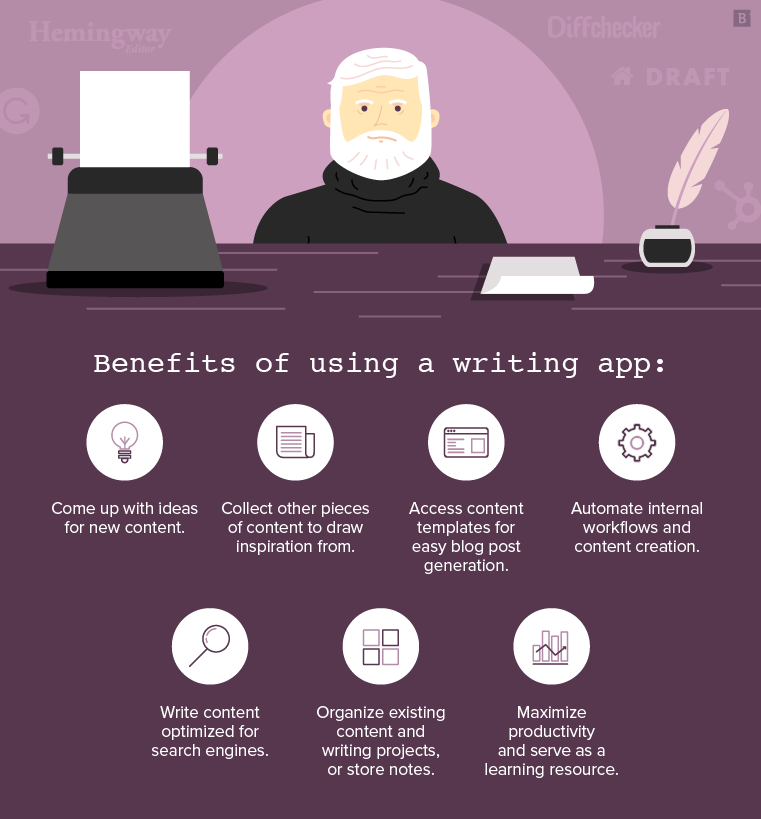
Why use digital writing tools at all?
Some may be hesitant to use an online app in the first place. Seeing a bunch of red-line edits or a low content score may feel disheartening, but it’s all in the interest of making you a better writer.
Also, we’re well past the days of Clippy. The in-app help guide and mascot for Microsoft Word gained notoriety for making mindless or wrong suggestions. Modern digital tools can do much more than reliably help improve your writing by pointing out grammar mistakes or scoring the readability.
These writings apps can be used to:
- Come up with ideas for new content.
- Collect other pieces of content to draw inspiration from.
- Access content templates for easy blog post generation.
- Automate internal workflows and content creation
- Write content optimized for search engines.
- Organize existing content and writing projects, or store notes.
- Maximize productivity and serve as a learning resource.
Beyond scrutinizing your sentence structure, these tools will help increase your own skills, or those of your content marketing staff.
So without further ado….
1. Hemingway Editor
Let’s start with a favorite of many a writer: the Hemingway Editor.
This app is great for reducing the wordiness that tends to crop up in writing. Remember, online readers will only give you so much time to make an impression, and you need to grab their attention forcefully and swiftly.
Perhaps no other author embodied that approach more than Ernest Hemingway.
The lasting stylistic legacy of the famed American writer of novels and short stories is a focus on clarity and concision. Hemingway — if you’d indulge a quick literary lesson — wrote from the general perspective of “less is more.”
This is also known as the iceberg theory: the idea that plot and narrative can be sufficiently conveyed in as few words as required without sacrificing meaning.
Hemingway, who was a newspaper writer and an ambulance driver in World War I, quickly learned the value in communicating your message promptly and with impact.
Hemingway Editor can help you achieve these copywriting ideals. Functionally, it’s a text editor that pares your copy down to the essentials. It scores readability based on presence of: adverbs, passive voice, sentences that are hard to read and complicated phrasing that has simpler alternatives. It will point out words to omit or sentences that can be made more clear by shortening, splitting up or otherwise revising.
You can see it at work below:
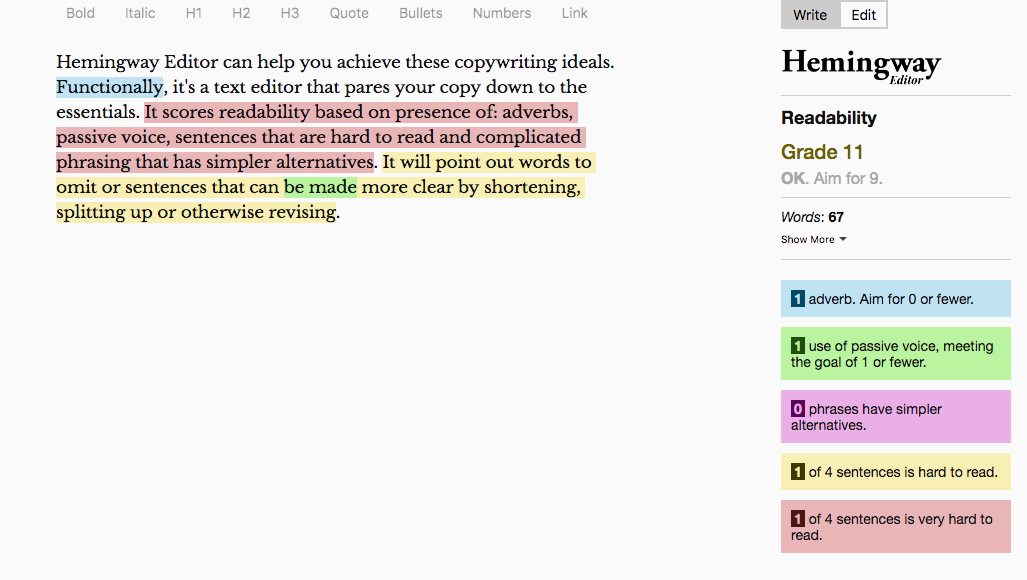
Making the recommended edits will allow you to command your readers’ attention and get your message across efficiently.
2. Grammarly
A single grammatical error could result in an embarrassing office communication or even the lost trust of a particularly watchful reader. But mistakes happen, and when you’re churning out all sorts of writing projects from blog posts to social media content, it can be tough to catch every little thing.
That’s what Grammarly is for.
This free writing assistant can proofread your content, emails, brand guidelines and everything else you write to ensure it has impeccable grammar free of spelling errors.
As far as a writing tool for automation goes, Grammarly is hard to match in effectiveness and convenience.
You can use Grammarly while working in Google Docs or Gmail, and it also has a compatible version for MS Office. Its free Chrome browser extension has a simple and intuitive interface: Copy and paste your document into the box and Grammarly will analyze it for grammar, readability and clarity.
You can also fine-tune that analysis by tinkering with the goals of your content.
You can select between different audience, subject matter familiarity and tone options to ensure the writing suggestions you get are tailored to your specific needs and content objectives: like to be conversational, but professional, with business readers
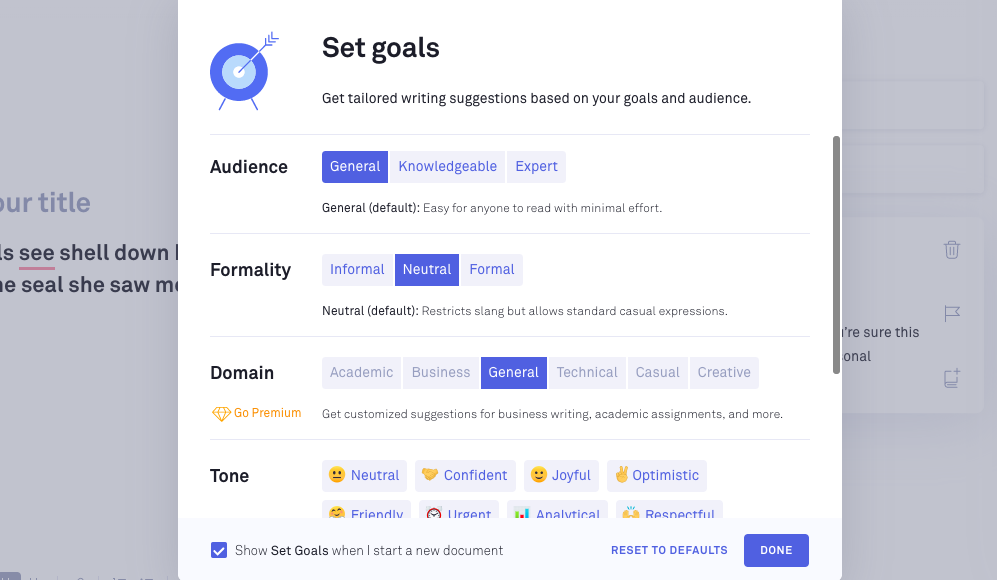
3. HubSpot Blog Ideas Generator
Sometimes writer’s block isn’t the issue, but rather a brainstorming block. Continually coming up with relevant ideas for blog posts can be taxing and take up valuable time.
Looking for some fast inspo? HugSpot’s Blog Ideas Generator can help you formulate writing prompts and content topics to jumpstart your process.
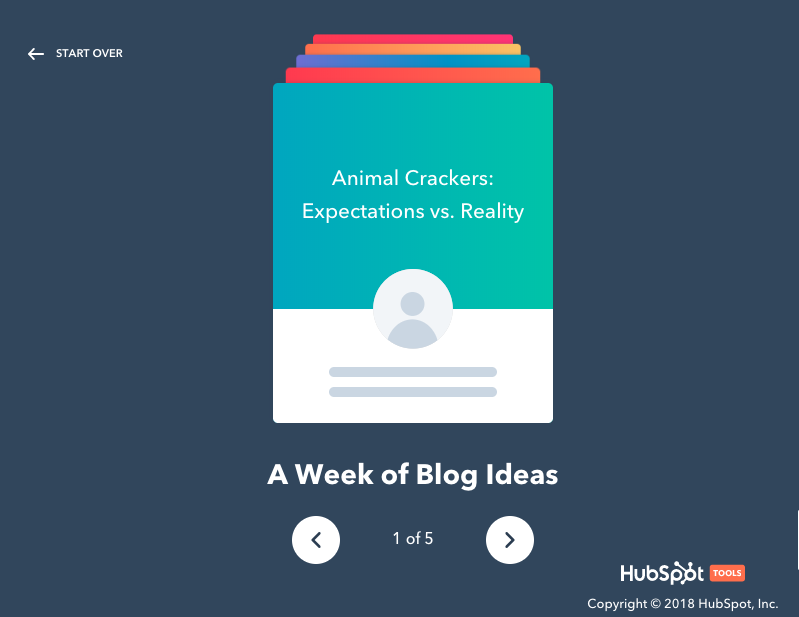
The app is straightforward: enter up to five different nouns (Step right up, pick a noun! Any noun!) and you’ll get a series of title idea cards you can cycle through that address whatever topics you input.
The free version is helpful in rapidly ideating content topics, leaving more time for writing and editing to perfect the piece, which can fuel content marketing team productivity.
Each time you use the tool, you’ll get a week’s worth of blog posts; and by entering a few personal information details, you can unlock a year’s worth of ideas and best practices recommendations for optimizing content.
4. Diffchecker
Content goes through multiple versions before it reaches its final, published form. Keeping track of all the changes made between these stages can be difficult for even the most attentive copywriting and design teams.
Diffchecker gives users a streamlined way to easily surface any and all of those alterations.
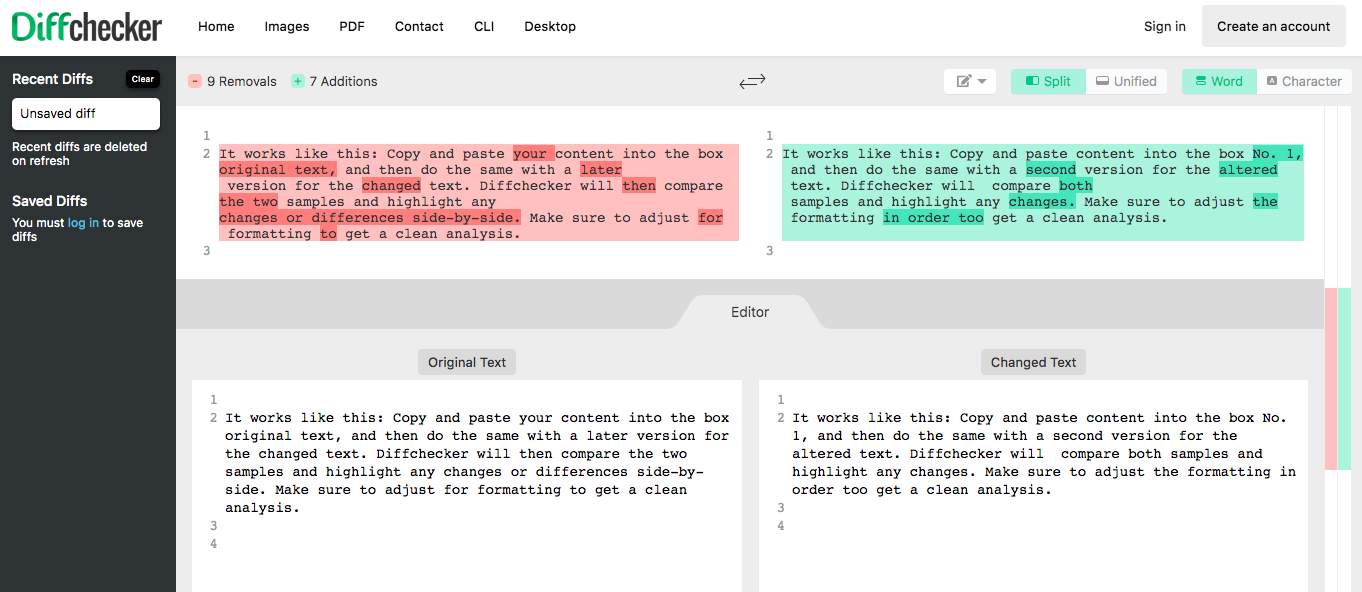
It works like this: Copy and paste your content into the Original Text box, and then do the same with a later version for the Changed Text box. Diffchecker will then compare the two samples and highlight any changes or differences side-by-side. Make sure to adjust for formatting to get a clean analysis.
The online tool also has a couple other useful features.
Not only can Diffchecker provide a text-based analysis, but it also has an option for uploading image files and PDFs. This makes it a valuable accuracy tool across the scope of content production, as you can also store differences you have checked before by creating a free account. It also has a desktop app that offers further functionality.
5. Draft
Looking for a word processor that isn’t Microsoft Word or Google Docs? No sweat: check out Draft as an alternative.
Draft is an intriguing choice for copywriters and content marketers because of all the features it boasts, including being able to compare old work and collaborating with other team members or stakeholders.
It’s a web-based tool that you can use to write and edit in. Just like GDocs, Draft will automatically save and backup your work, so there’s no worry about losing that hard-earned word count. The layout is relatively clean, giving users a straightforward processor that they can use for any type of writing project.
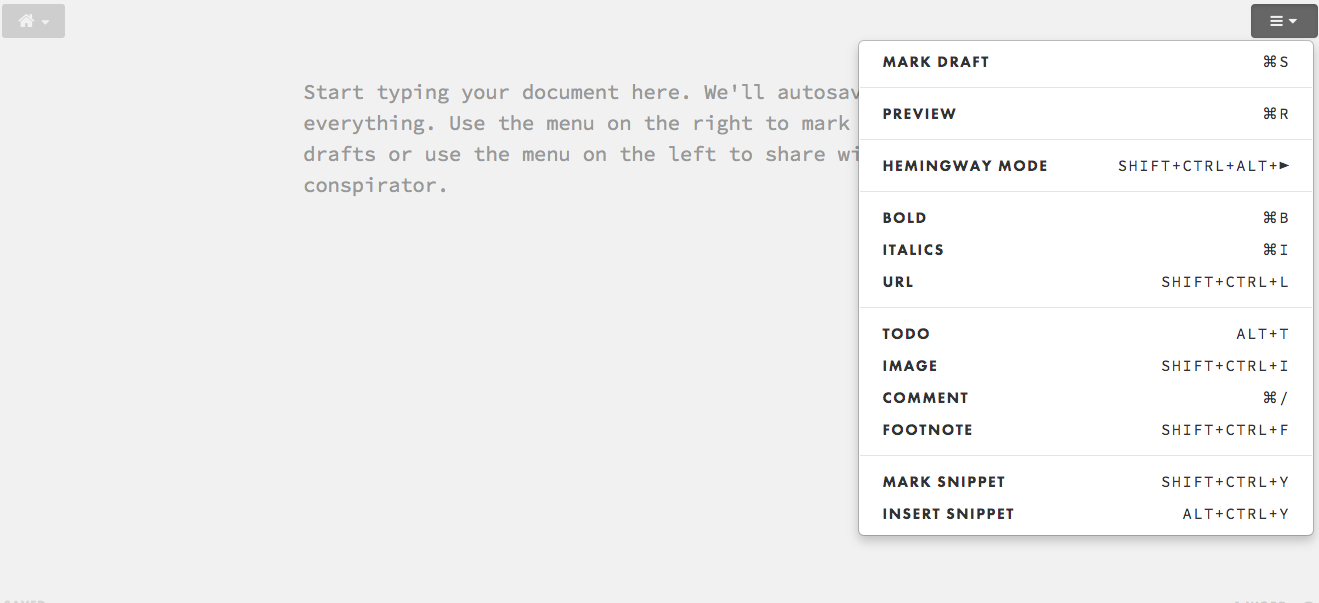
Perhaps the most alluring part of Draft is its wide set of features, including one called “Hemingway Mode.” Ol’ Ernest has long been attributed with the quote “write now, edit later,” and Hemingway Mode disables the delete key so you have no choice but to strive forward with your writing.
A list of other Draft features includes:
- Commenting and markup.
- Presentations.
- Cloud sync.
- Publishing.
- Team collaboration.
- Image hosting.
- Analytics.
- Doc email.
- Transcription tools.
Using Draft does require signing up for a free account. But once that’s done, you can leverage all the nifty functionality that Draft offers, or work with the API to extract even further value from the app.
Everyone is a bit protective of what they write, naturally. But the only way to improve your marketing content and copywriting skills is to seek help. Editors can offer expertise and insight, and these five online writing tools can round out everything else you need to be the next Hemingway of content marketing.





